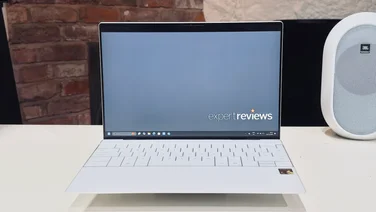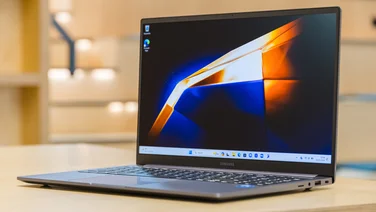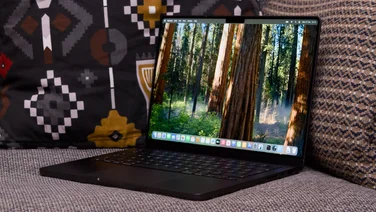To help us provide you with free impartial advice, we may earn a commission if you buy through links on our site. Learn more

This Vaio EB1S0E is the first laptop we’ve seen to use Intel’s new Core i3 mobile processor, and so we couldn’t wait to benchmark it. An overall score of 77 may not sound much, but considering that it’s equivalent to the fastest laptop in our recent £700 laptop group test, we were duly impressed.
More impressive, is that its 2.13GHz Core i3-330M is the least expensive of the new range of processors; a range that also includes mobile Core i5 and Core i7 chips with base clock speeds up to 2.66GHz. All the new chips are dual-core and have Hyper-Threading to improve performance when multitasking. Most processors in the range also use Intel’s overclocking Turbo Boost technology, which boosts clock speeds if the chip isn’t running near its peak temperature. Unfortunately, the entry-level Core i3 used in Sony’s Vaio VPC-EB1S0E doesn’t include this.
Intel has moved to a 32nm manufacturing process for the new processors, using smaller transistor sizes, allowing the chips to be more power efficient, with a TDP of just 35W. Intel has also included a graphics processor on the chip, which removes the need for a dedicated graphics chip and reduces power consumption. Sony, though, has opted to use a dedicated graphics chip here instead – the ATI Mobility Radeon HD 5470 – as the integrated chip isn’t powerful enough for playing modern 3D games.
Given all this, its battery score of three hours 15 minutes was slightly disappointing. However, the battery itself isn’t very large and the dedicated graphics chipset negates any potential advantage from the processor’s onboard GPU. We see this as a problem with the EB1S0E, rather than Core i3 laptops in general. That said, at over three hours, it’s still sufficient for occasional mobile use.
Sony’s new EB Series is a beautiful laptop, with a subtle two-tone design. The lid and the area above the keyboard are a light silver colour, while on our model, the keyboard panel and wrist rest were finished in white. The wrist rest itself has a glossy finish with a subtle sparkle, and is made of a high quality plastic that is comfortable to work on and feels solidly built.
This quality finish and choice of interesting materials extends across the entire case, with attention to detail as we’d expect from a Vaio. For example, the power button has a small LED indicator where it meets the edge of the case, so it’s still visible with the lid closed. Our only concern was the DVD drive tray, which is flimsy and loose when open; a slot drive would have been more in standing with the rest of the case.
The dedicated ATI graphics card helped the EB1S0E reach almost 20fps in our Call of Duty 4 benchmark. This is not fast enough for hardcore gaming, but less action-oriented games, such as Dragon Age: Origins or Mass Effect 2 will run smoothly at lower resolutions and with more advanced graphics settings turned off.
HD video won’t be a problem, and there’s an HDMI port for outputting to a home entertainment system. The internal speakers are fairly loud, but tinny at high frequencies and lack bass, so if you want to get the most out of films you’d be advised to connect a decent sound system.
The screen is also not as impressive as we’d hoped. It has a glossy finish which will reflect overhead lighting, and vertical viewing angles are tight. Colours are natural and vibrant, but without LED backlighting, contrast isn’t as good as some screens we’ve seen recently. The backlight isn’t as bright as some, though it is mostly even, with only a couple of darker patches along the bottom edge.
Sony used to include a generous software bundle including Adobe Photoshop Elements, but that’s missing from this model. You still get a lot of Sony utility software, although its usefulness is questionable, and you get Sony’s media centre replacement, accessible via a dedicated button above the keyboard, which is slick but doesn’t really add anything that Windows’ own Media Center can’t provide. Another button launches the Vaio Care support software, which gives you access to troubleshooting, backup and recovery tools.
The keyboard has keys which are flat-topped and have a gap between them. Their action is light, with distinct feedback that makes them a joy to type on. The layout is standard too, with a double-height Enter key, and there’s even room for a four-column numeric keypad and dedicated page navigation keys.
The touchpad is a recessed area of the wrist rest with a roughened finish that’s actually quite responsive, although we can see it getting a bit grubby in everyday use. There are two large, separate buttons with a light action and enough travel to provide feedback, and it’s set close enough to the edge of the case to be easily accessible by your thumb.
Sony hasn’t included a FireWire port, as it usually does, but instead the USB port on the left edge of the case doubles as an eSATA port for high-speed external storage. The other three USB ports are all clustered on the right side. An ExpressCard/34 slot gives you a few expansion options – for example, you could add a TV tuner or broadband modem – and there are dedicated memory card slots for both Sony’s proprietary Memory Stick HG-Duo and the more popular SDHC card format.
Design-wise, the EB1S0E stands out from the crowd with its quality materials and build. Underneath the hood, Intel’s latest processor provides impressive performance for the money, and a decent graphics card means you have access to a respectable range of games. The keyboard is also worth a mention, and even though the screen isn’t as bright as some we’ve seen it’s still good quality.
Overall, the EB1S0E offers very good value for money and if you’re keen to buy a new laptop today then this is certainly a contender, but we’re going to hold off on giving it an award until we’ve finished testing a few more Core i3 models.






